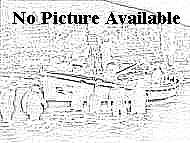 |
 |
The Flamborough Lifeboats |
 |
 |
© Simon Robson
1998-2007
Home
Services
Boats..
Pictures
R.N.L.I
Links
History..
Awards..
"ELIZABETH & ALBINA WHITLEY" (O.N. 772) 1934 - 1948
This page was |
Misc. |
| Site Map Copyright |
Awards |
Silver Medal & Thanks on Vellum |
Elizabeth & Albina Whitley |
 |
Statistics |
Total Service Calls: 33 |
Related |
| Next Boat All Boats Elizabeth Jane Palmer Jason Logg Will & Fanny Kirby Friendly Forester Mary Frederick Gertrude No. 2 Station Boats Jane Hannah Macdonald Matthew Middlewood St. Michael's Paddington |
The new boat had her official naming ceremony on 28th August 1935. The ceremony was conducted by The Right Honourable Lord Deramore, T.D., J.P., Lord Lieutenant of the East Riding of Yorkshire. Presiding was Chairman of the Flamborough Branch, Dr. R. C. Field, with the Royal National Lifeboat Institution being represented by its Chairman, Sir Godfrey Baring, Bt. The religious service was taken by Flamborough's Vicar, the Reverend E. C. Peters, along with the Reverend G. P. Maynard from the Methodist Chapel. It is estimated that over two thousand people attended along with the Lord Mayor and Lady Mayoress of Hull, Ladies Lifeboat Guild's from Bridlington, Beverley, Bradford, Robin Hood's Bay, Scarborough and Withernsea.
Sir Godfrey Baring presented the lifeboat to the Flamborough branch and Dr. Field officially accepted her. She was then dedicated by the vicar and officially named "ELIZABETH AND ALBINA WHITLEY" by Lord Deramore. A framed inscription was then unveiled recording the gift from Lady Powell, which can still be seen in today's station. Flamborough branch committee members Mr. T. W. Woodcock proposed a vote of thanks to Lord Deramore, which was seconded by Mr. A. R. Burton.
The new lifeboat was paid for from a legacy of the late Mr. Elias G. Whitley, of St. Helier, Jersey and amounted to £3,295. The stipulation of the legacy was to provide a lifeboat as close to Flamborough Head as possible, as this is where Mr. Whitley's father had been lost at sea.
The new lifeboat weighed in at six tons, including a one ton iron keel. She was 35 feet 6 inches long and 10 feet in beam. Powered by a single watertight 35 b.h.p AE6, 6 cylinder Weyburn petrol engine, she could continue to run even if the engine room was flooded. The shrouded propeller was 19½ inches diameter by 16½; pitch. With forty eight gallons of fuel and a maximum engine speed of 3,300 r.p.m the boat could cruise at 7½ knots with a range of 51 miles. The new motorboats were divided into 6 watertight compartments and carried 115 air cases. The watertight deck was some distance above the waterline with an arrangement of valves through her sides. These allowed the boat to empty herself in 12 seconds if swamped.
The Liverpool class boat was not a natural self righting design, but as such proved to be very stable, even when at an angle of over 90 degrees of tilt. Water ballast tanks allowed the boat to be launched on an even keel. These were filled after launching to lower the stern, providing better sea handling. The crew of seven were made up of Coxswain, Second Coxswain, motor mechanic, second motor mechanic, bowman and two boatmen. A small canopy allowed the crew some shelter from adverse conditions. A total of thirty casualties could be carried in rough weather, in addition to the crew.
The "ELIZABETH AND ALBINA WHITLEY" was on station throughout the Second World War, where it is recorded she launched 15 times saving 35 lives. After 14 years service the boat finally left in 1948. During this time she had launched a total 33 times and saved 77 lives. The most notable service was the rescue of the crew of the 'LORD ERNLE' in which the Coxswain won a silver medal and the crew were awarded thanks inscribed on vellum.
Notable Services | |
9th May 1947 | - To the trawler 'EXPRESS' of Bridlington (engine failure), saved 6 and vessel. |
12th November 1946 | - To the fishing coble 'PIONEER' of Flamborough (engine failure), saved 3 and vessel. |
13th December 1945 | - To the steamer 'EMPIRE TIGAVEN' of London (collision), saved 14. |
9th December 1942 | - To the fishing coble 'DORIS' of Flamborough (engine failure), saved 4 and vessel. |
3rd February 1940 | - To the steam ship 'MERTAINER' of Stockholm (sinking), saved 35 and vessel. |
- To the steam trawler 'LORD ERNLE' of Grimsby (ran aground), saved 15. | |

Designed by Simon Robson ©1998-2007
Helmsman - Flamborough Lifeboat Station